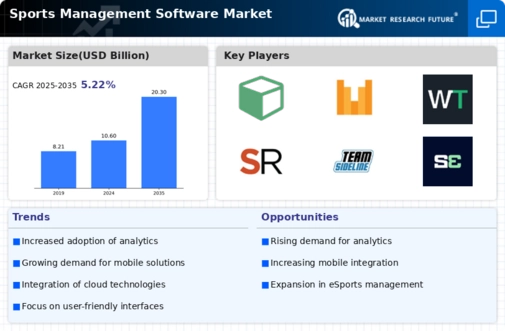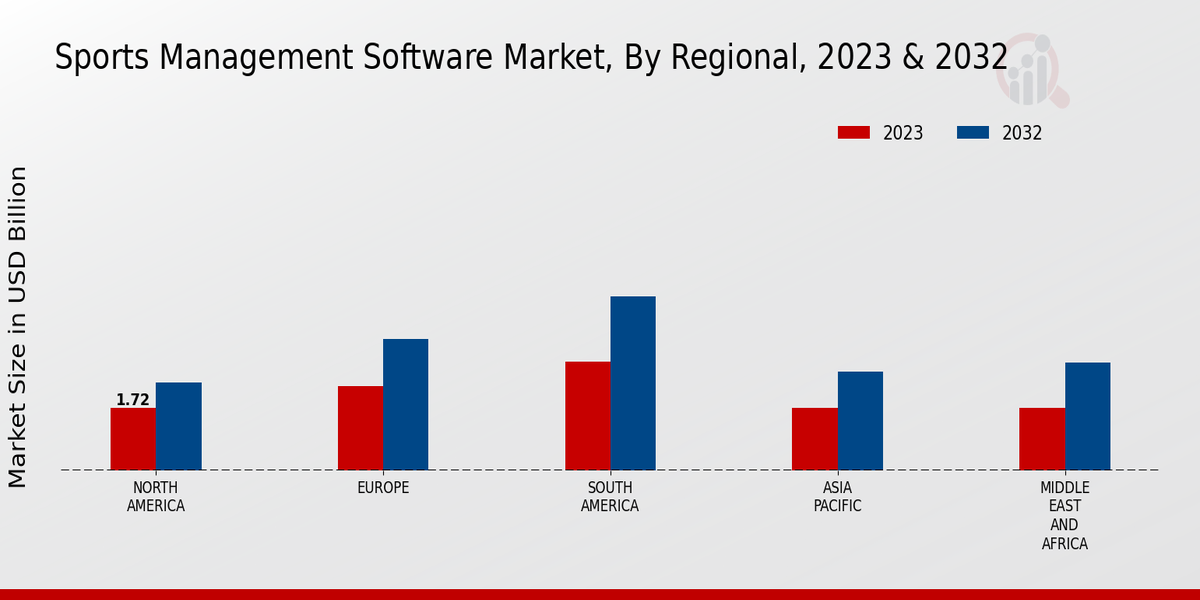Market Growth Projections
The Global Sports Management Software Market Industry is projected to experience substantial growth over the next decade. With a market size expected to reach 20.3 USD Billion by 2035 and a compound annual growth rate of 6.11% from 2025 to 2035, the industry is poised for significant expansion. This growth is driven by various factors, including the increasing demand for digital solutions, the rise of sports analytics, and the integration of cloud-based technologies. As organizations continue to invest in innovative software solutions, the market is likely to evolve, adapting to the changing needs of sports management.
Emergence of Mobile Applications
The Global Sports Management Software Market Industry is being transformed by the emergence of mobile applications. These applications provide users with convenient access to various functionalities, including scheduling, communication, and performance tracking, directly from their mobile devices. The proliferation of smartphones has facilitated this trend, enabling sports organizations to engage with fans and athletes more effectively. As mobile technology continues to advance, the demand for mobile-compatible software solutions is likely to increase, further driving market growth. This shift towards mobile applications reflects a broader trend of enhancing user experience and accessibility in the sports management sector.
Integration of Cloud-Based Solutions
The Global Sports Management Software Market Industry is witnessing a significant shift towards cloud-based solutions. These platforms offer enhanced accessibility, scalability, and cost-effectiveness, making them attractive to sports organizations of all sizes. By adopting cloud technology, teams can streamline operations, facilitate remote collaboration, and ensure data security. The transition to cloud-based systems is expected to play a crucial role in the market's growth, as organizations increasingly prioritize flexibility in their operations. This trend aligns with the broader movement towards digital transformation in sports, indicating a potential for sustained growth in the coming years.
Rising Popularity of Sports Analytics
The Global Sports Management Software Market Industry is significantly influenced by the rising popularity of sports analytics. Teams and organizations are increasingly utilizing data analytics to gain competitive advantages, optimize player performance, and enhance strategic decision-making. This trend is evidenced by the growing investment in analytics software, which is projected to contribute to the market's expansion. As the industry evolves, analytics tools are becoming more sophisticated, allowing for real-time data processing and insights. This shift towards data-centric strategies is likely to drive the market's growth, with projections indicating a market size of 20.3 USD Billion by 2035.
Increasing Demand for Digital Solutions
The Global Sports Management Software Market Industry is experiencing a notable surge in demand for digital solutions. As sports organizations increasingly seek to streamline operations, enhance fan engagement, and improve athlete performance, the adoption of software solutions has become essential. In 2024, the market is projected to reach 10.6 USD Billion, reflecting a growing recognition of the benefits associated with digital transformation. Organizations are leveraging software for tasks such as scheduling, communication, and performance analytics, which not only improves efficiency but also fosters a more connected sporting environment. This trend indicates a shift towards a more data-driven approach in sports management.
Growing Investment in Youth Sports Programs
The Global Sports Management Software Market Industry is benefiting from the growing investment in youth sports programs. As communities recognize the importance of youth engagement in sports, there is an increasing allocation of resources towards developing programs that promote participation and skill development. This investment often includes the implementation of management software to streamline operations, track progress, and enhance communication among coaches, parents, and athletes. The emphasis on youth sports not only fosters talent development but also contributes to the overall growth of the sports management software market, as organizations seek effective solutions to manage these initiatives.














